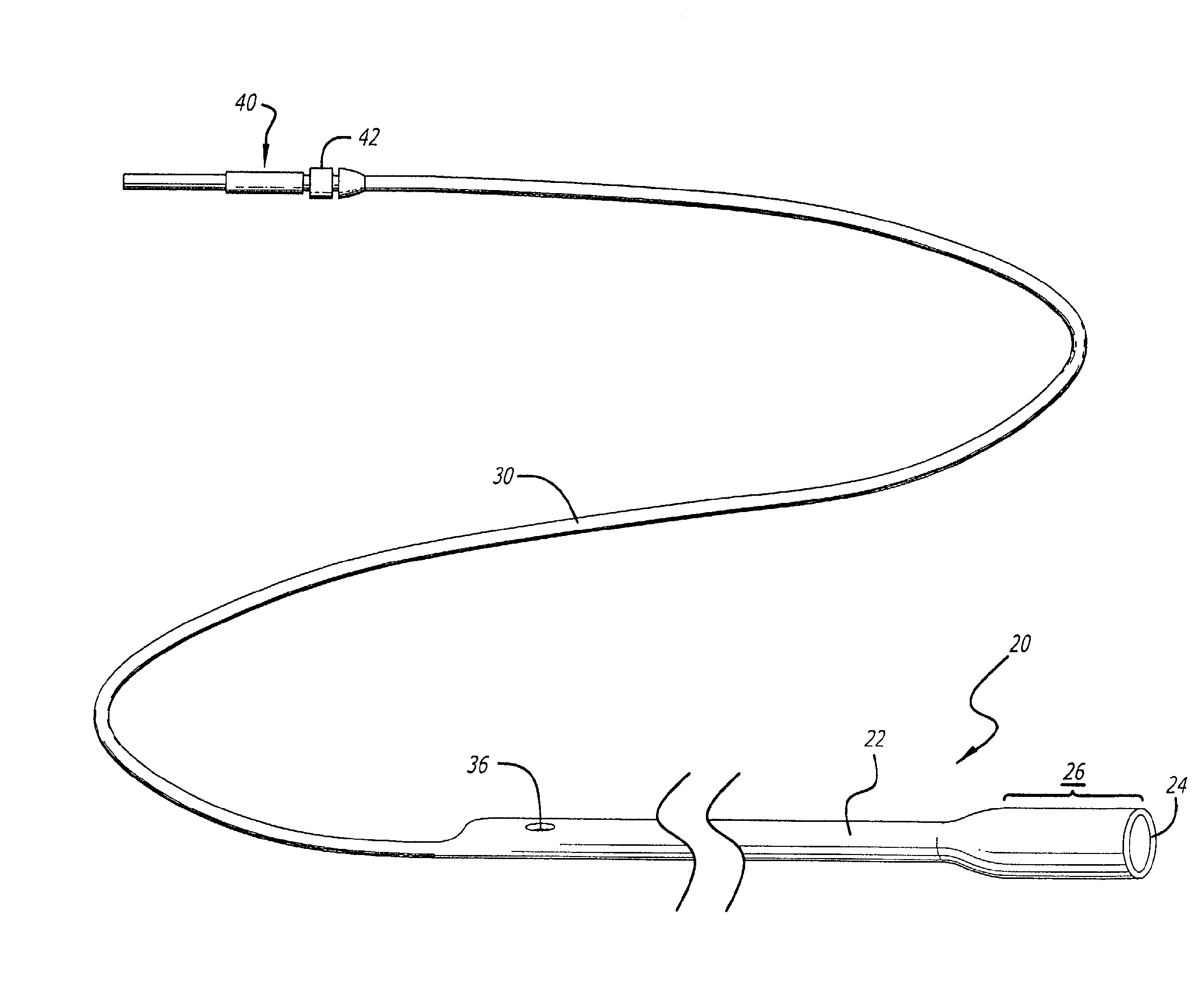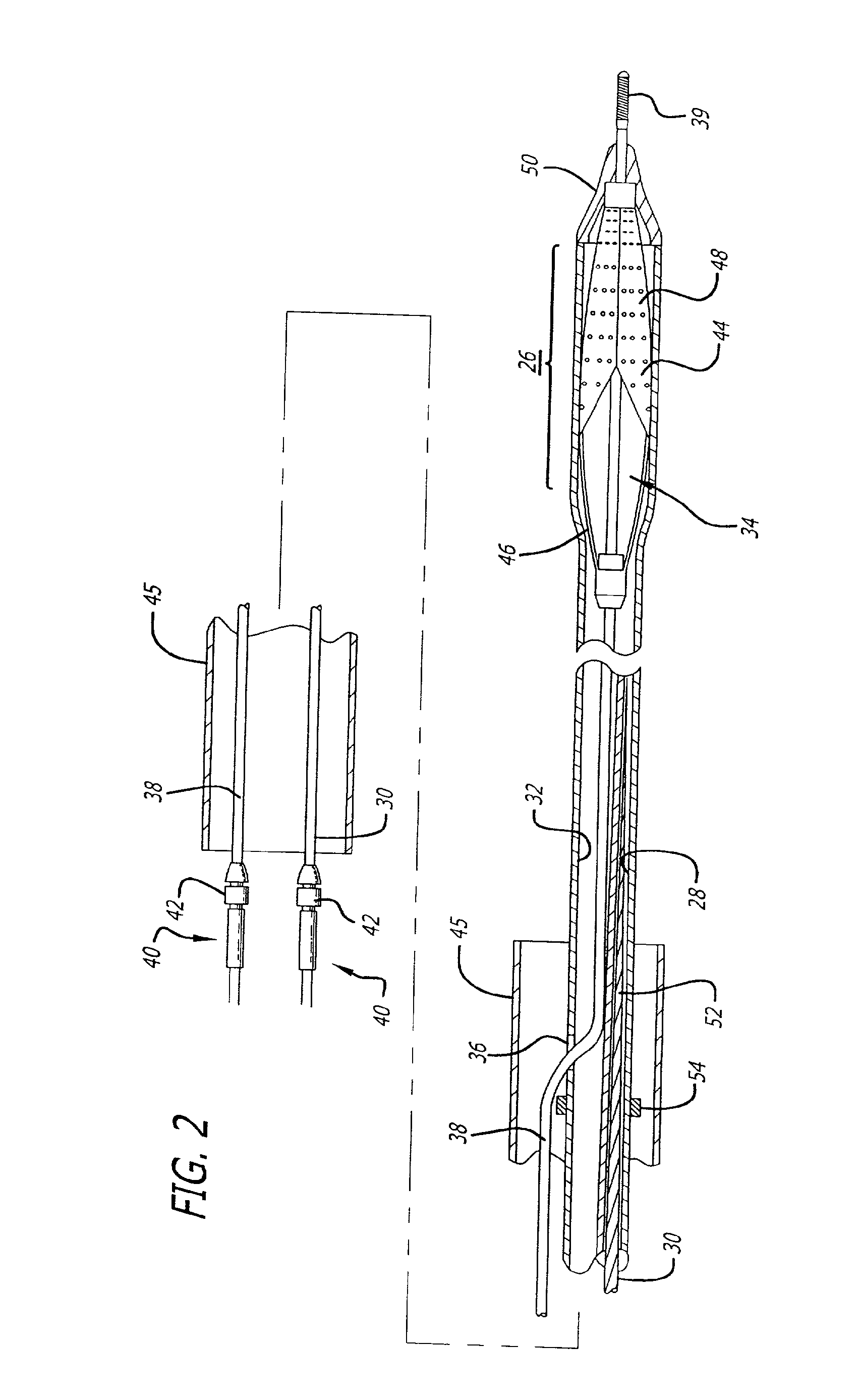Delivery and recovery sheaths for medical devices
a technology for medical devices and sheaths, applied in the field of delivery and recovery sheaths, can solve the problems of buckling of the sheath, affecting the patient's health, and affecting the patient's life, and achieve the effect of enhancing frictional fit and preventing buckling
- Summary
- Abstract
- Description
- Claims
- Application Information
AI Technical Summary
Benefits of technology
Problems solved by technology
Method used
Image
Examples
Embodiment Construction
[0041]Turning now to the drawings, in which like reference numerals represent like or corresponding elements in the drawings, FIGS. 1 and 2 illustrate a restraining device 20 incorporating features of the present invention. This restraining device is adapted for use with a medical device, such as an expandable embolic filtering device designed to capture embolic debris which may be created and released into a body vessel during an interventional procedure. The restraining device 20 can be used both as a delivery sheath of placing the filtering device into the target area and a recovery sheath for retrieving the device from the patient.
[0042]FIGS. 1 and 2 show a particular embodiment of a restraining device 20 incorporating features of the present invention which includes a sheath 22 having a distal tip 24 and expandable housing portion 26. The sheath 22 is a tube-like member which has a lumen 28 extending proximally from the expandable housing portion 26 to receive the distal end of...
PUM
 Login to View More
Login to View More Abstract
Description
Claims
Application Information
 Login to View More
Login to View More - R&D
- Intellectual Property
- Life Sciences
- Materials
- Tech Scout
- Unparalleled Data Quality
- Higher Quality Content
- 60% Fewer Hallucinations
Browse by: Latest US Patents, China's latest patents, Technical Efficacy Thesaurus, Application Domain, Technology Topic, Popular Technical Reports.
© 2025 PatSnap. All rights reserved.Legal|Privacy policy|Modern Slavery Act Transparency Statement|Sitemap|About US| Contact US: help@patsnap.com



